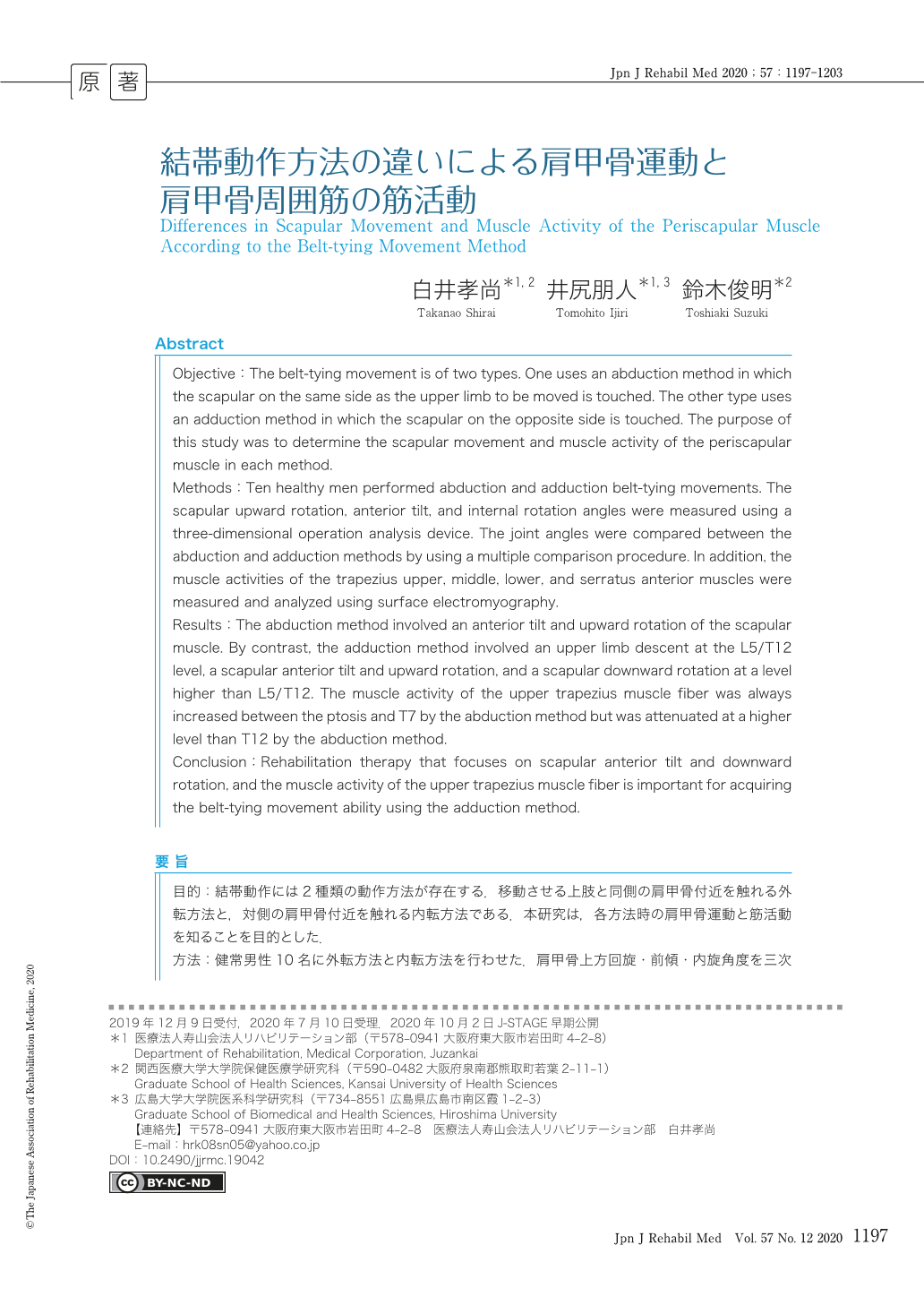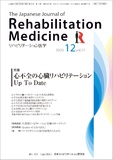Japanese
English
- 販売していません
- Abstract 文献概要
- 1ページ目 Look Inside
- 参考文献 Reference
要旨
目的:結帯動作には2種類の動作方法が存在する.移動させる上肢と同側の肩甲骨付近を触れる外転方法と,対側の肩甲骨付近を触れる内転方法である.本研究は,各方法時の肩甲骨運動と筋活動を知ることを目的とした.
方法:健常男性10名に外転方法と内転方法を行わせた.肩甲骨上方回旋・前傾・内旋角度を三次元動作解析装置で計測し,多重比較法で比較した.僧帽筋上部線維・中部線維・下部線維,前鋸筋の筋活動を表面筋電計で計測し,分析した.
結果:外転方法は肩甲骨が前傾・上方回旋した.内転方法は下垂〜L5・T12で肩甲骨が前傾・上方回旋し,L5・T12より高位で下方回旋した.僧帽筋上部線維の筋活動は,外転方法では下垂〜T7で常に増大したが,内転方法ではT12より高位で減弱した.
結論:内転方法の獲得には,肩甲骨の前傾や下方回旋,僧帽筋上部線維の筋活動に着目したリハビリテーション治療が重要となる.
Objective:The belt-tying movement is of two types. One uses an abduction method in which the scapular on the same side as the upper limb to be moved is touched. The other type uses an adduction method in which the scapular on the opposite side is touched. The purpose of this study was to determine the scapular movement and muscle activity of the periscapular muscle in each method.
Methods:Ten healthy men performed abduction and adduction belt-tying movements. The scapular upward rotation, anterior tilt, and internal rotation angles were measured using a three-dimensional operation analysis device. The joint angles were compared between the abduction and adduction methods by using a multiple comparison procedure. In addition, the muscle activities of the trapezius upper, middle, lower, and serratus anterior muscles were measured and analyzed using surface electromyography.
Results:The abduction method involved an anterior tilt and upward rotation of the scapular muscle. By contrast, the adduction method involved an upper limb descent at the L5/T12 level, a scapular anterior tilt and upward rotation, and a scapular downward rotation at a level higher than L5/T12. The muscle activity of the upper trapezius muscle fiber was always increased between the ptosis and T7 by the abduction method but was attenuated at a higher level than T12 by the abduction method.
Conclusion:Rehabilitation therapy that focuses on scapular anterior tilt and downward rotation, and the muscle activity of the upper trapezius muscle fiber is important for acquiring the belt-tying movement ability using the adduction method.

Copyright © 2020, The Japanese Association of Rehabilitation Medicine. All rights reserved.


